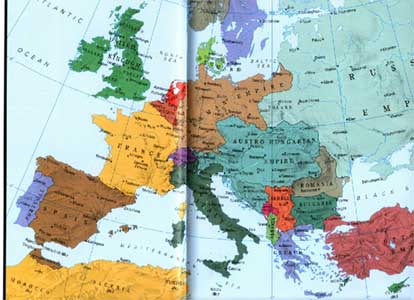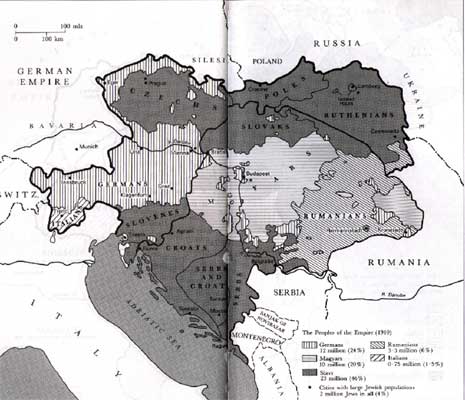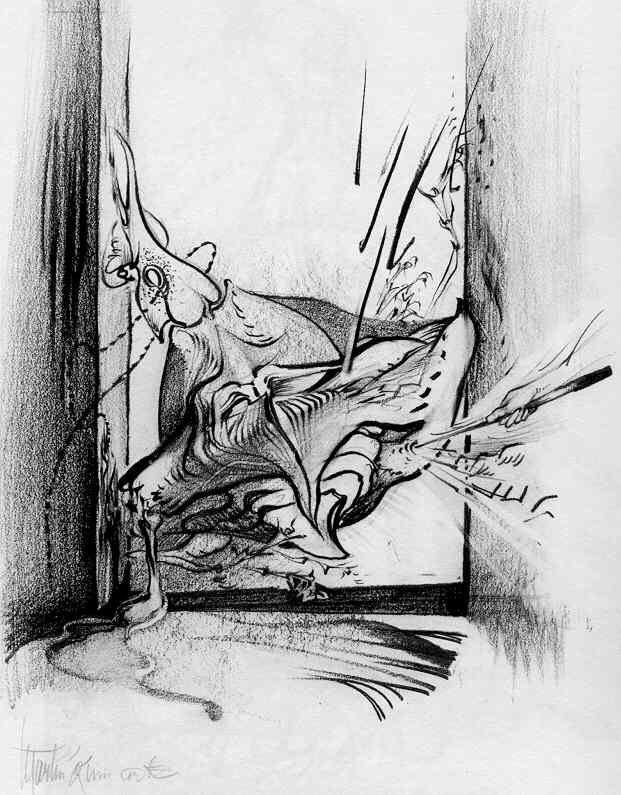
Birth/Death
|
3 July 1883 in Prague, Bohemia (now
Czech
Republic, then Austro-Hungarian Empire)
/ 3 June 1924 near Vienna, Austria
from tuberculosis
|
| Appearance |
6 feet, 140-100 pounds, black hair,
gray-blue
eyes |
Family
|
German-speaking Jewish family, eldest
of
four surviving siblings (all sisters),
who died in Nazi concentration camps
|
Profession
|
Trained as a lawyer, employee of
Workman's
Accident Insurance Institute, and later full-time writer
|
Love
|
Engaged three times but never married
|
| Famous Works |
Metamorphosis [1912/15]
The Judgment [1912/16]
The Penal Colony [1914/19]
The Trial [1916/25]
The Castle [1922/26]
Amerika [1912/27] |
Characteristics
|
The term "Kafkaesque" refers to the
absurd
entanglements of modern life,
including work, bureaucracy, and mechanization.
|

 See
Prof.
Breckman's UPenn Lecture
See
Prof.
Breckman's UPenn Lecture
Novella: Shorter than a novel (but longer than a
short story),
often focusing on one major theme
and with less subplots; in tradition of
Bocaccio
has a moral or satiric theme.
For example:
Metamorphosis is a novella.
Parable:
A comparison, a similitude;
any
saying or narration in which something is
expressed in terms of something
else (see
also allegory); a simple story illustrating a
moral or religious
lesson. For example: The
Bible and other religious
texts use parables
to explain values (e.g., the parable of the sower,
the lamp, three sons, etc.). In order for audiences
to remember these (originally
oral) tales, the
narrative is usually divided into three
parts/persons/events.
Allegory:
a form of extended
metaphor,
in
which objects, persons, and actions in a narrative,
are equated with the
meanings that lie outside the
narrative itself. The underlying meaning has
moral,
social, religious, or political significance, and characters
are often
personifications of abstract ideas as charity,
greed, or envy.
Thus, an allegory is a story with two meanings, a
literal meaning and a symbolic meaning.
For example:
The blindfolded figure with scales is an allegory
for
how justice proceeds.
"As Gregor Samsa awoke one morning
from uneasy
dreams he found himself
transformed in his bed into a gigantic insect" (Kafka 1).
Als
Gregor Samsa eines Morgens
aus unruhigen Träumen erwachte,
fand
er sich in seinem Bett zu einem
ungeheueren Ungeziefer verwandelt.
Lecture: Three Allegories in The
Metamorphosis
Obituary
Write an obituary for the traveling
salesman Gregor
Samsa from the
standpoint of those meanings that
you can reconstruct from
the data of his life.
Please remember that your particular reconstruction
will be determined by the often inarticulate anxieties,
hopes, and beliefs
that you presumably share with
your readership. Please also reflect upon the
public
voice that you have chosen to embody. Are you
writing your commemoration
of Gregor for a literary
quarterly, a local newspaper, an insurance company
newsletter, a Jewish journal, a family digest etc.?
Recommended Reading and Links
Sander Gilman, Franz Kafka: The Jewish
Patient.
(New York: Routledge, 1995).
How to cite this page:
Nielsen, Wendy C. "Family in Metamoporphosis." Franz Kafka:
The
Metamorphosis. April 2004.
<http://www.chss.montclair.edu/~nielsen/kafka.html>
(date accessed).
How to cite this lecture:
Nielsen, Wendy C. "Three Allegories in The Metamorphosis."
College Writing II. Montclair State University, Upper
Montclair. 6 Apr.
2004.
Last updated: 1 Apr. 2004




